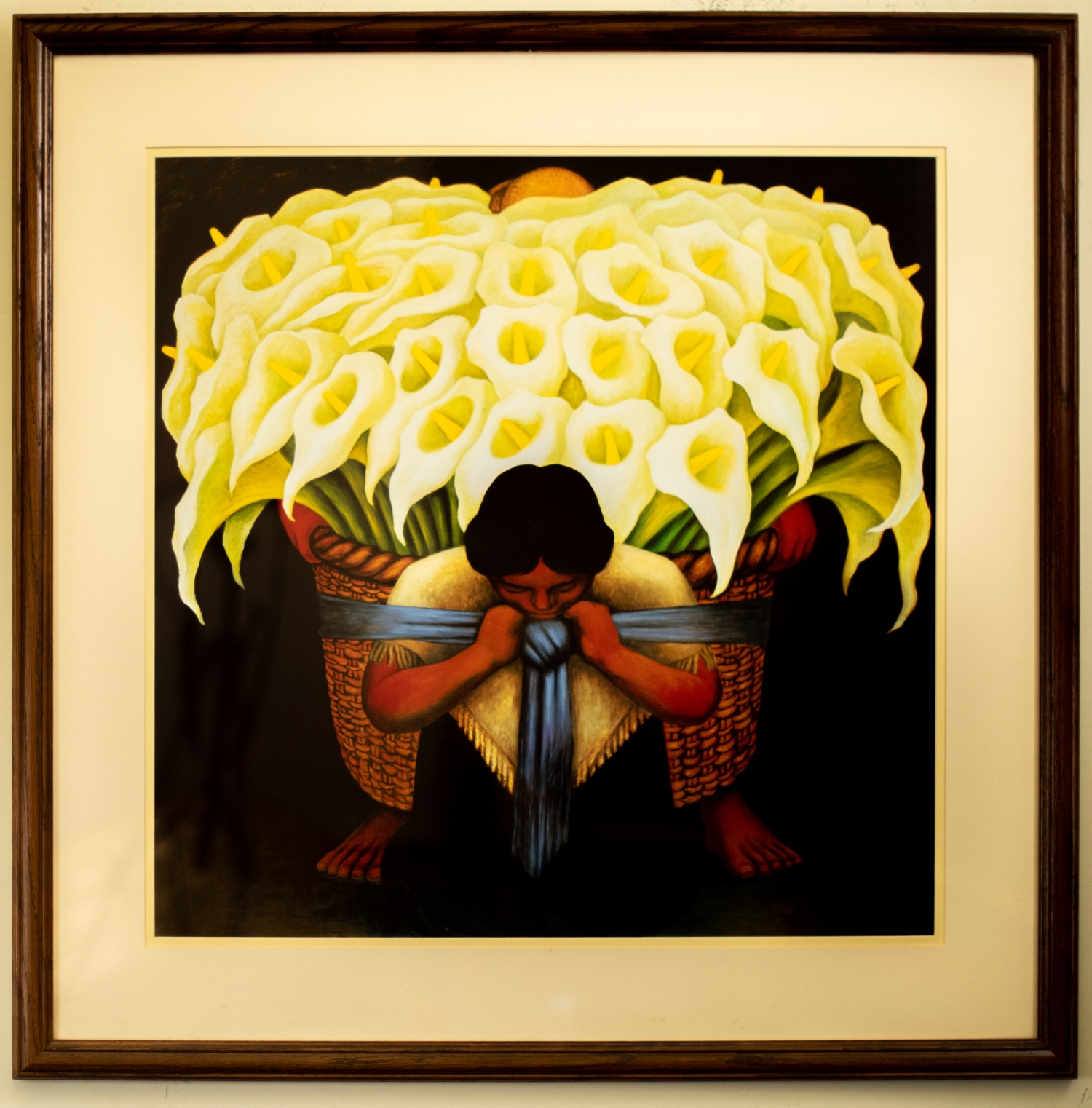El Vendedor de Alcatraces
Diego Rivera was a famed artists in the Mexican Muralists, a group active throughout the 1900s whose work explored the social and political implications of Mexican life after the 1910 Revolution. Rivera often depicted themes of Mexico's history and social issues using strife as well as triumph to draw a line from the past to the present. In so doing, he presented nationalist themes that he (and the Mexican government) hoped would encourage unity and reinforce pride in Mexican civil society. "El Vendedor de Alcatraces" was one of many in a series of paintings by Rivera featuring rural Mexican workers carrying large bundles of alcatraces, or calla lilies. The calla lily is a flower commonly associated with the wealth of Mexican flora. However, featured here in large quantities, the lilies also stimulate the speculation that such wealth is a load carried by Mexico's working class. In this painting the figure in the foreground is a woman, presumably middle-aged, kneeling with her head down and strap of the basket around her shoulders. The basket and its contents canopy above her in a way that seems impossible to carry alone. Just then one notices the extra set of feet and hands that help carry the basket from behind, and although the lilies cover this figure, the message becomes clear that one does not carry the burden alone.



